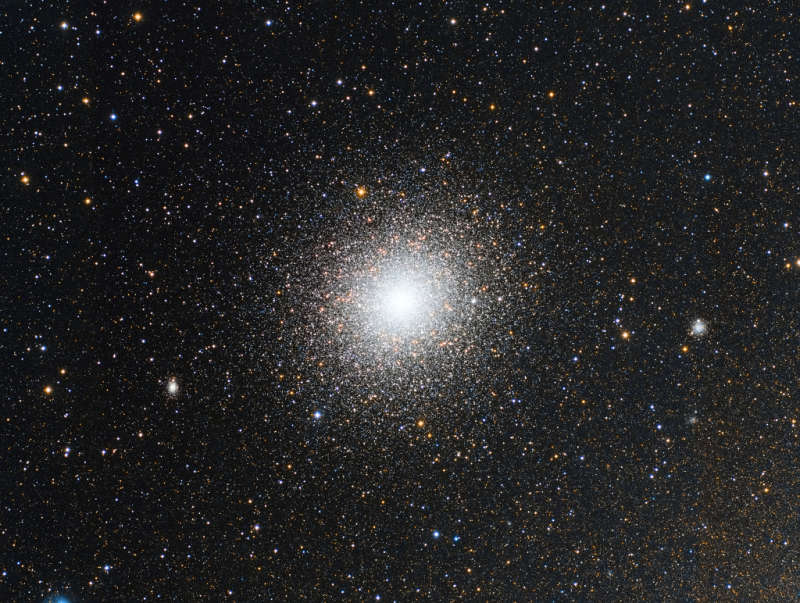
|
Credit & Copyright: Jose Mtanous
Explanation:
Globular star cluster 47 Tucanae is a jewel of the southern sky.
Also
known as NGC 104,
it roams the halo of our Milky Way Galaxy
along with some 200 other globular star clusters.
The second brightest globular cluster (after
Omega Centauri)
as seen from planet Earth, it lies about 13,000 light-years away and
can be spotted naked-eye close on the sky to the
Small Magellanic Cloud
in the constellation of
the Toucan.
The dense cluster is made up of hundreds of thousands
of stars in a
volume only about 120 light-years across.
Red giant stars
on the outskirts of the cluster are easy to pick out as yellowish stars
in this sharp telescopic portrait.
Tightly packed globular cluster 47 Tuc is also home to
a star with the closest known
orbit
around a black hole.
|
January February March April May June July August September October November December |
| ||||||||||||||||||||||||||||||||||||||||||||||||
NASA Web Site Statements, Warnings, and Disclaimers
NASA Official: Jay Norris. Specific rights apply.
A service of: LHEA at NASA / GSFC
& Michigan Tech. U.
Based on Astronomy Picture
Of the Day
Publications with keywords: globular cluster - 47 Tuc
Publications with words: globular cluster - 47 Tuc
See also:
